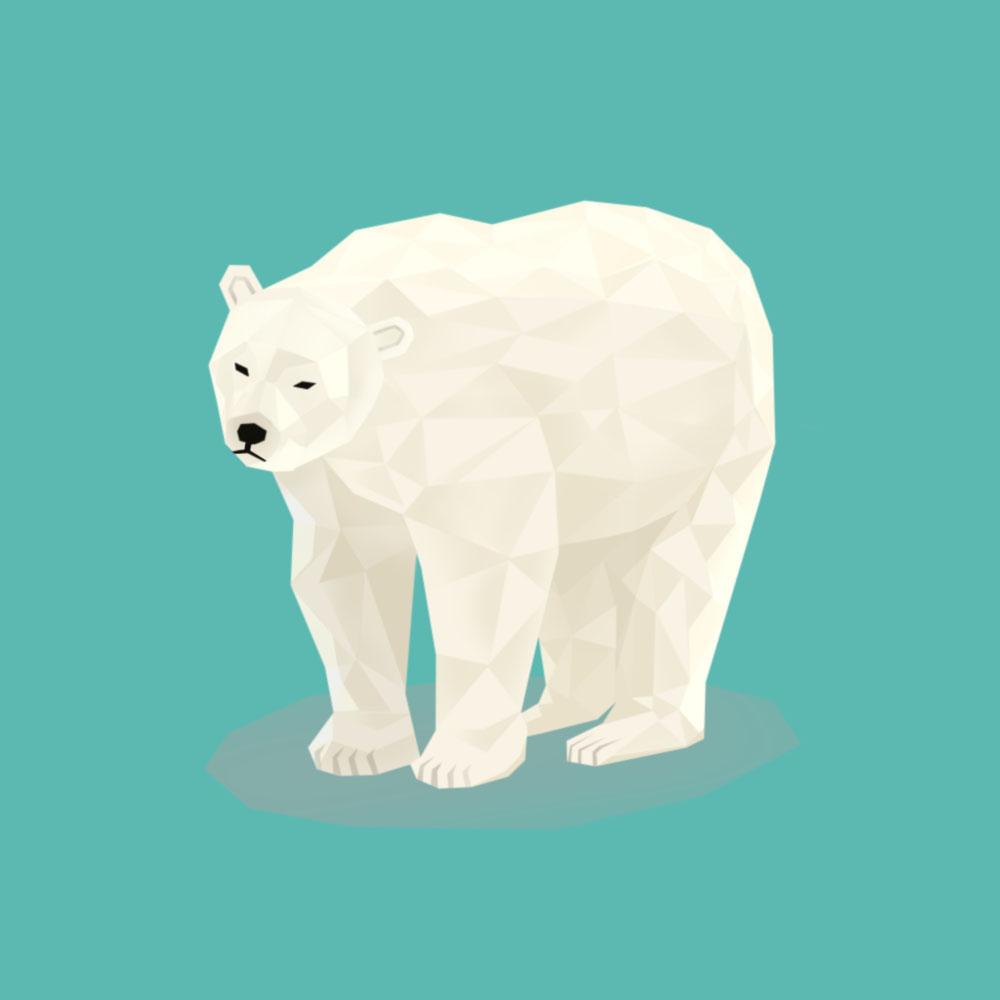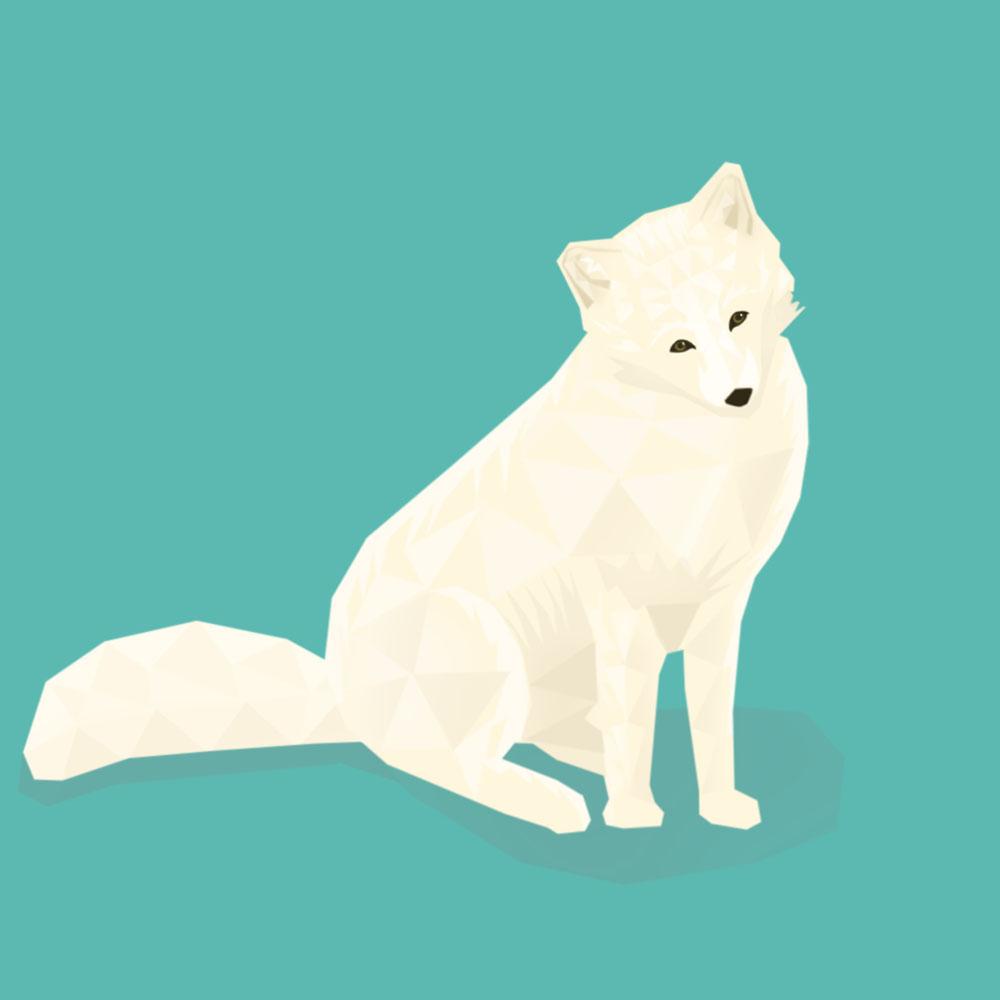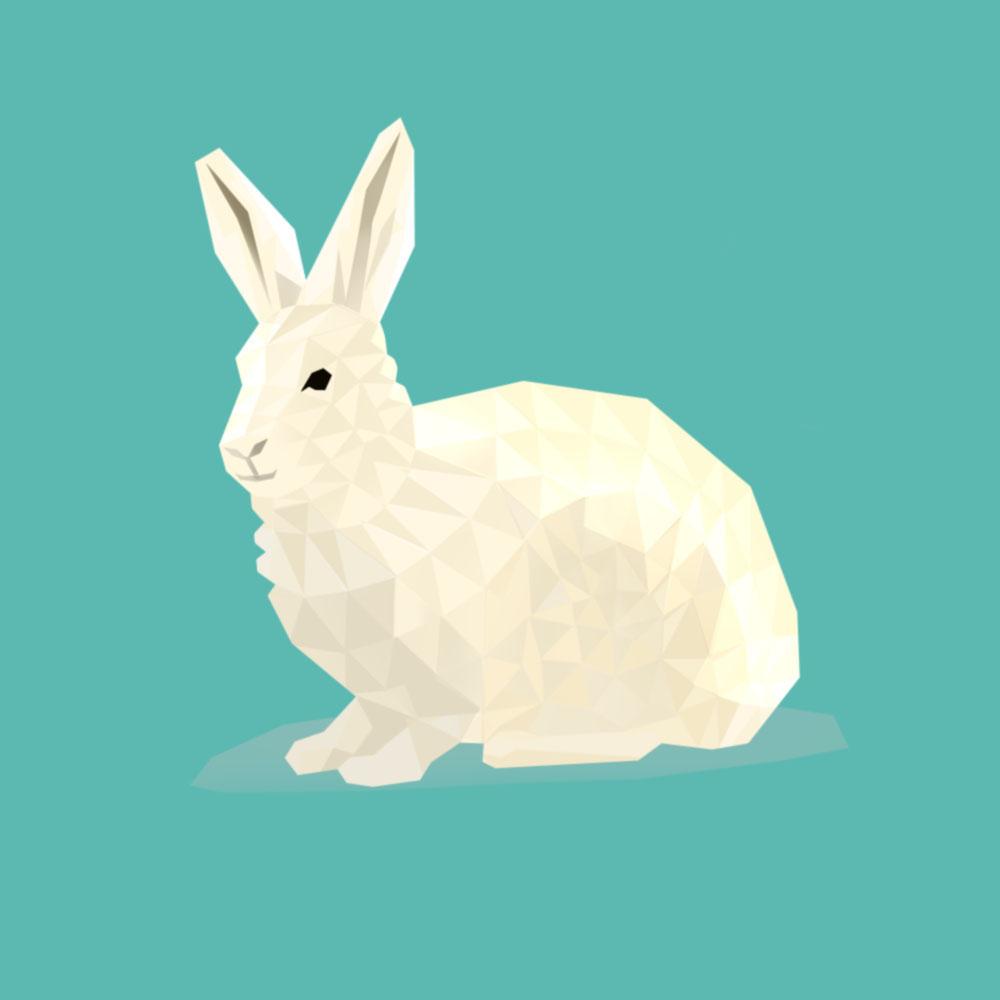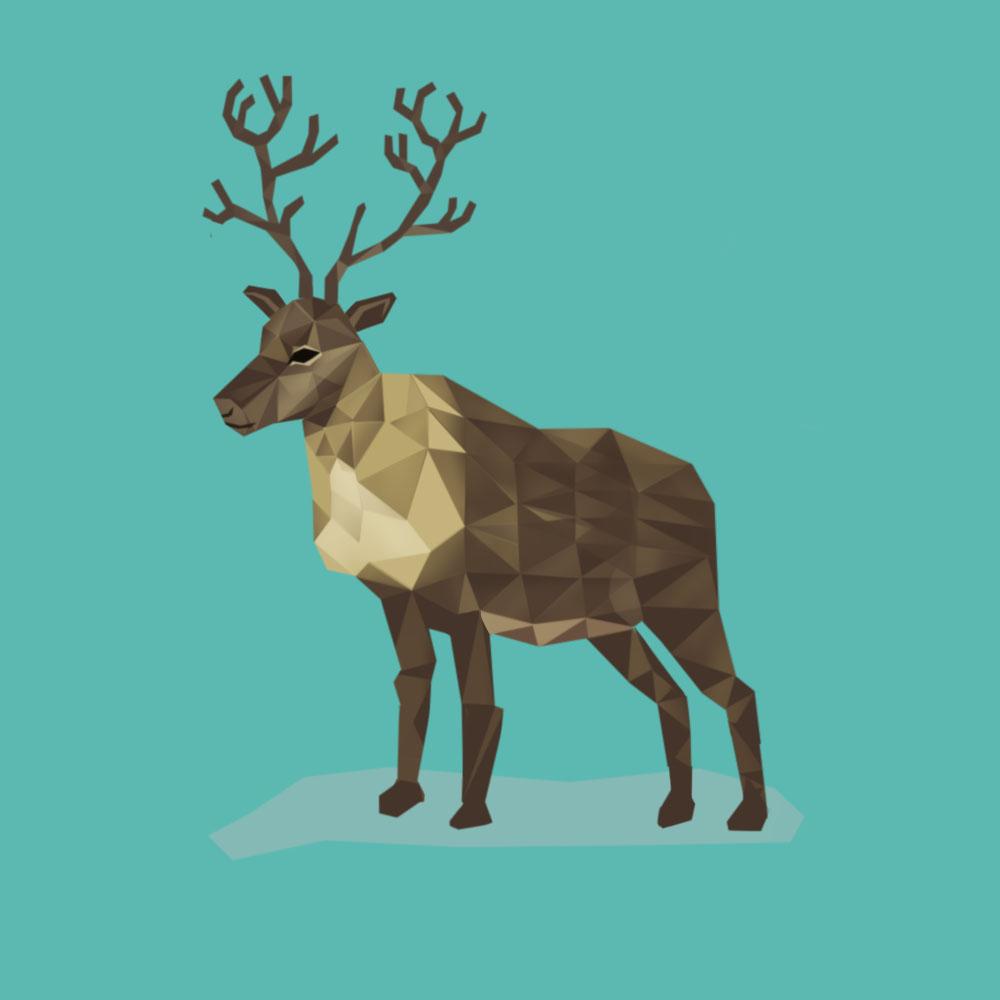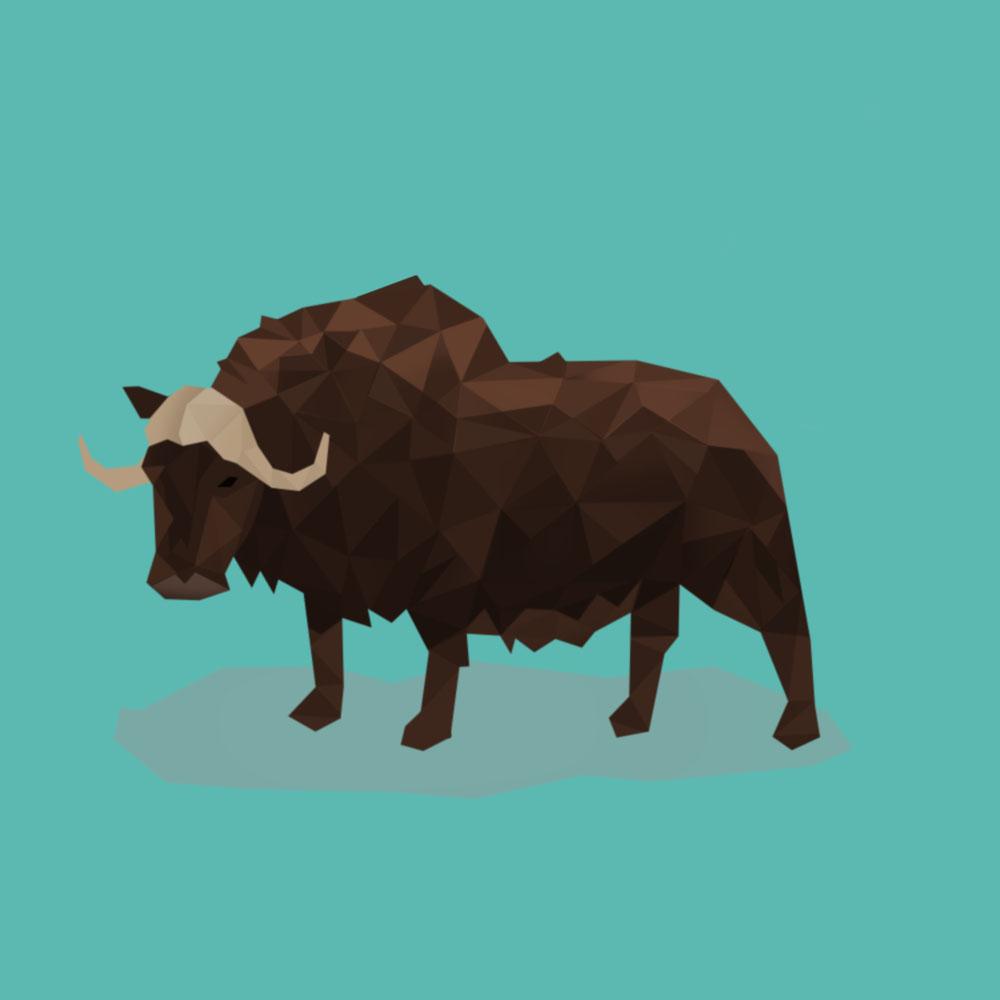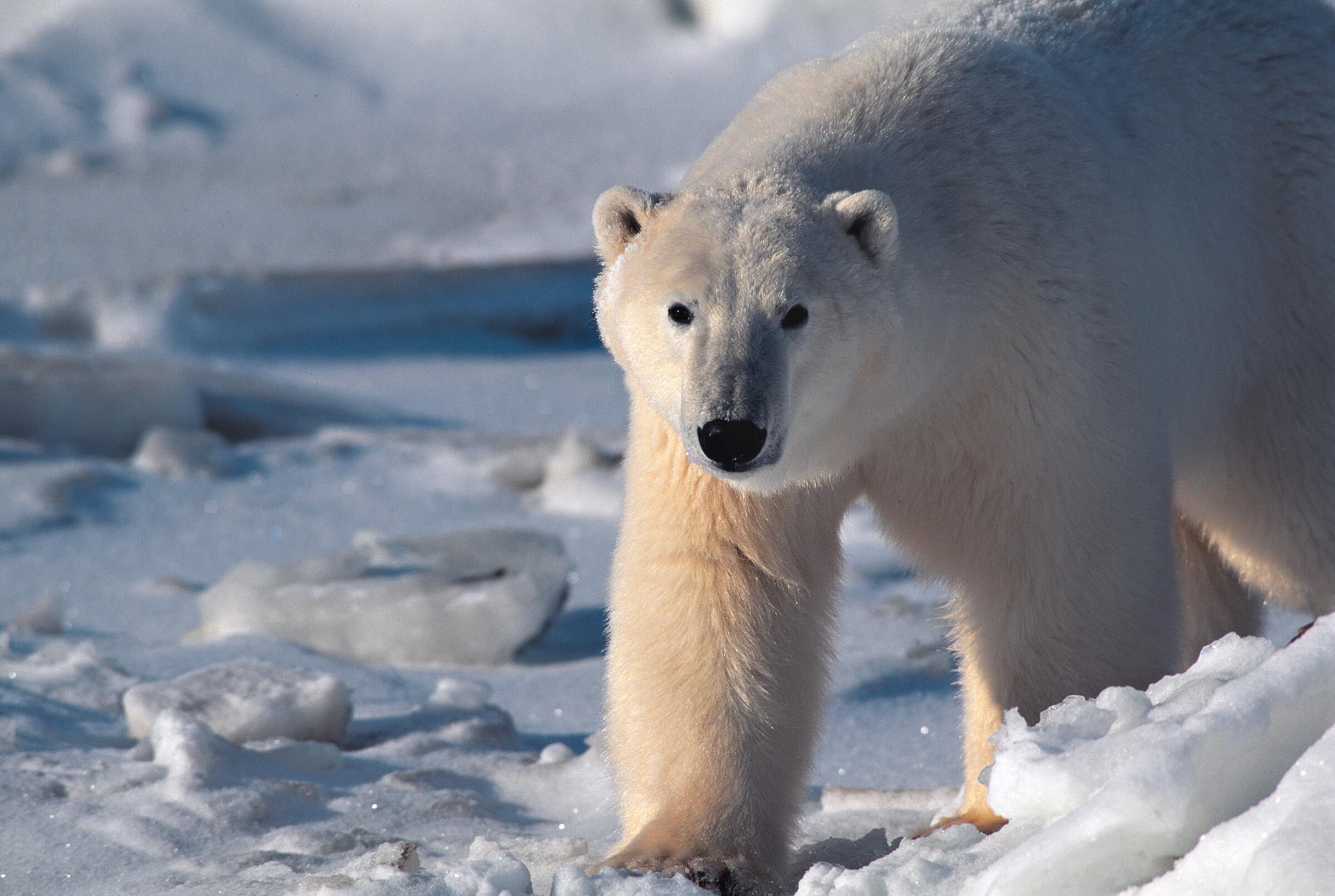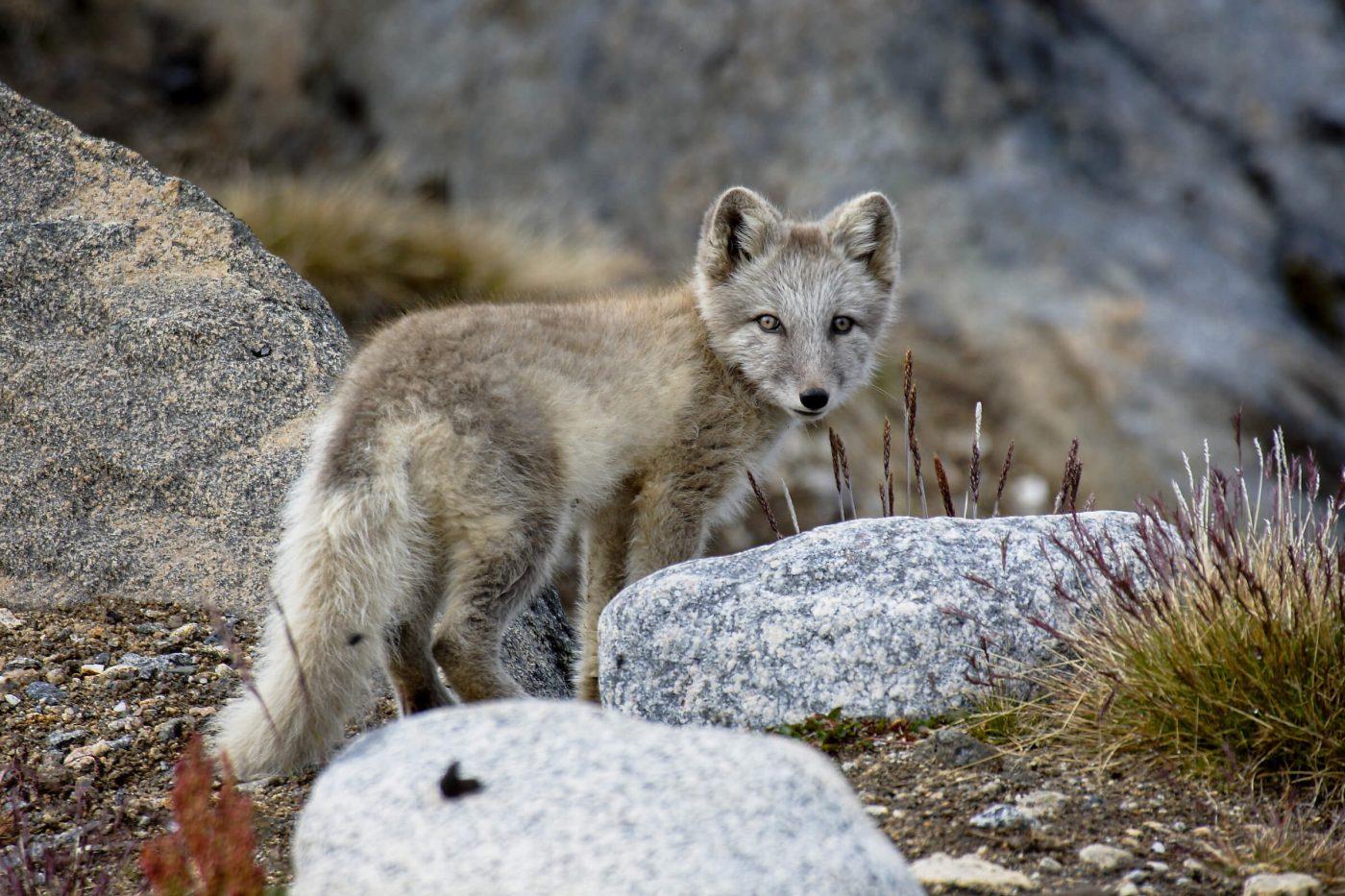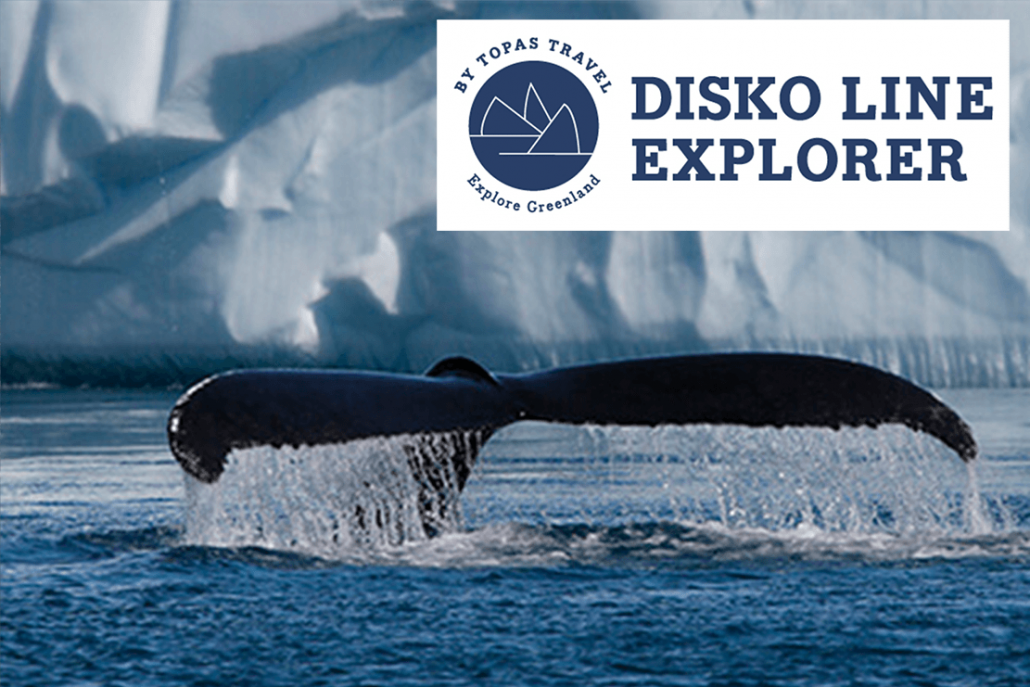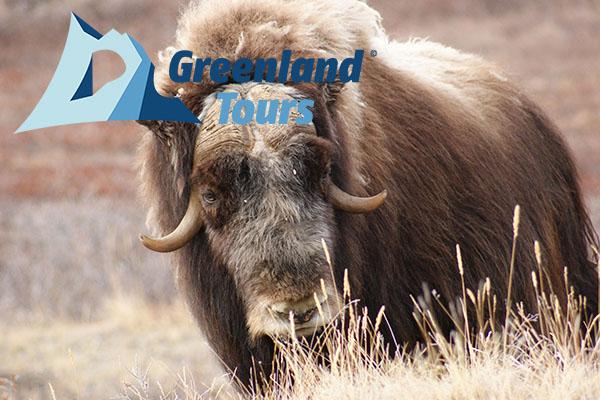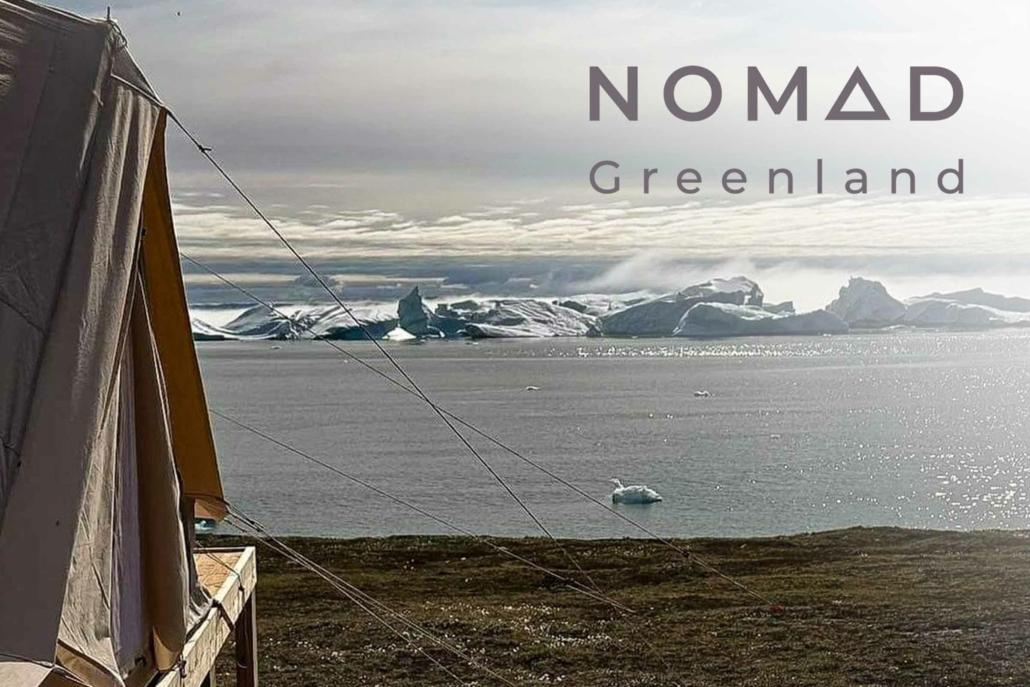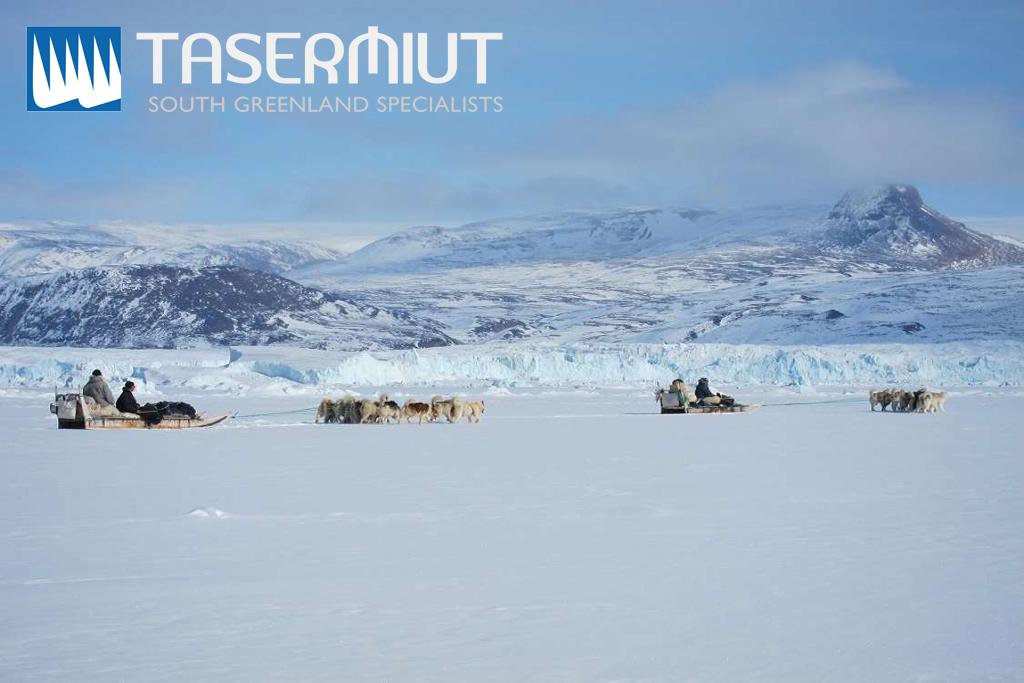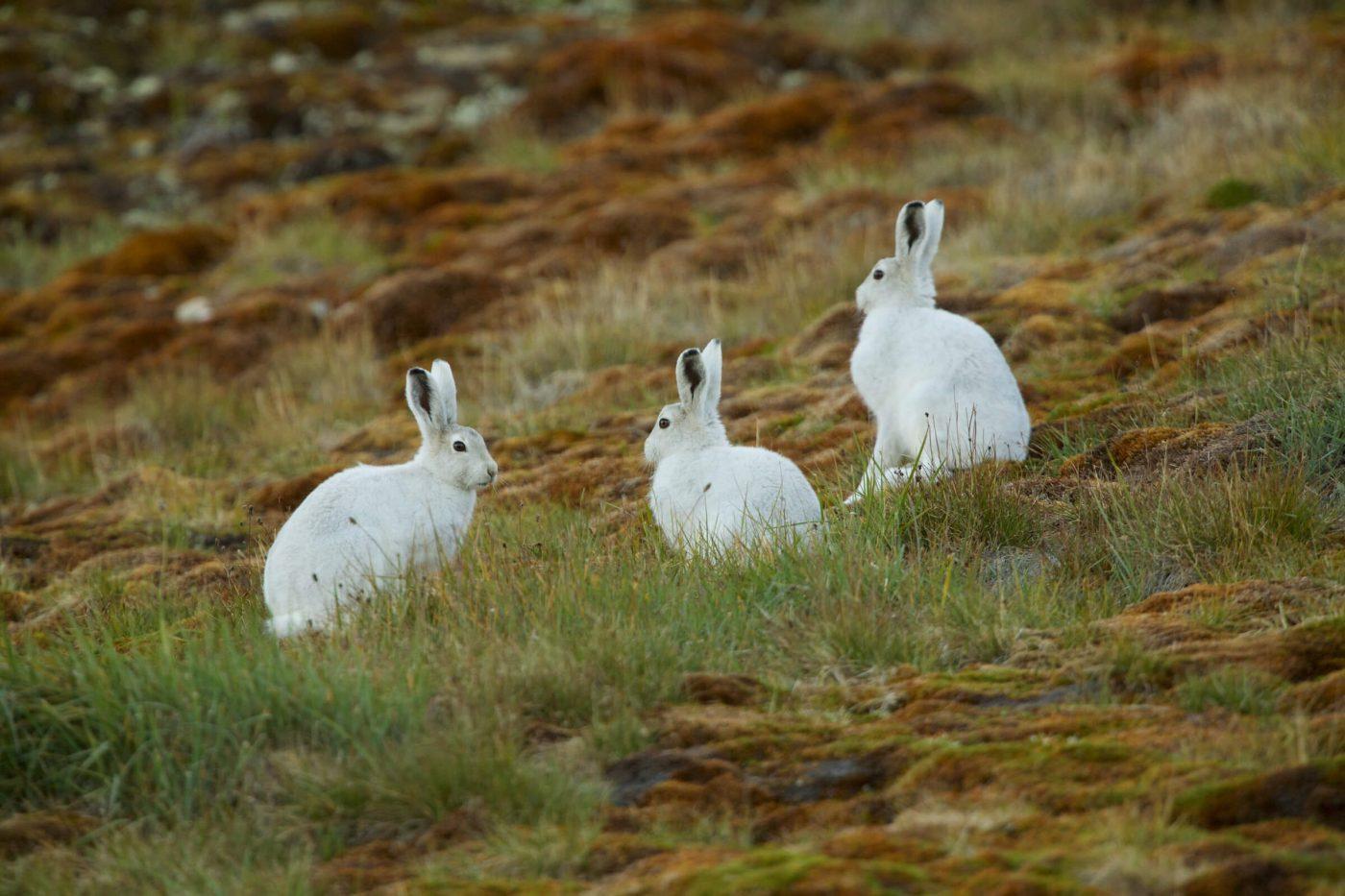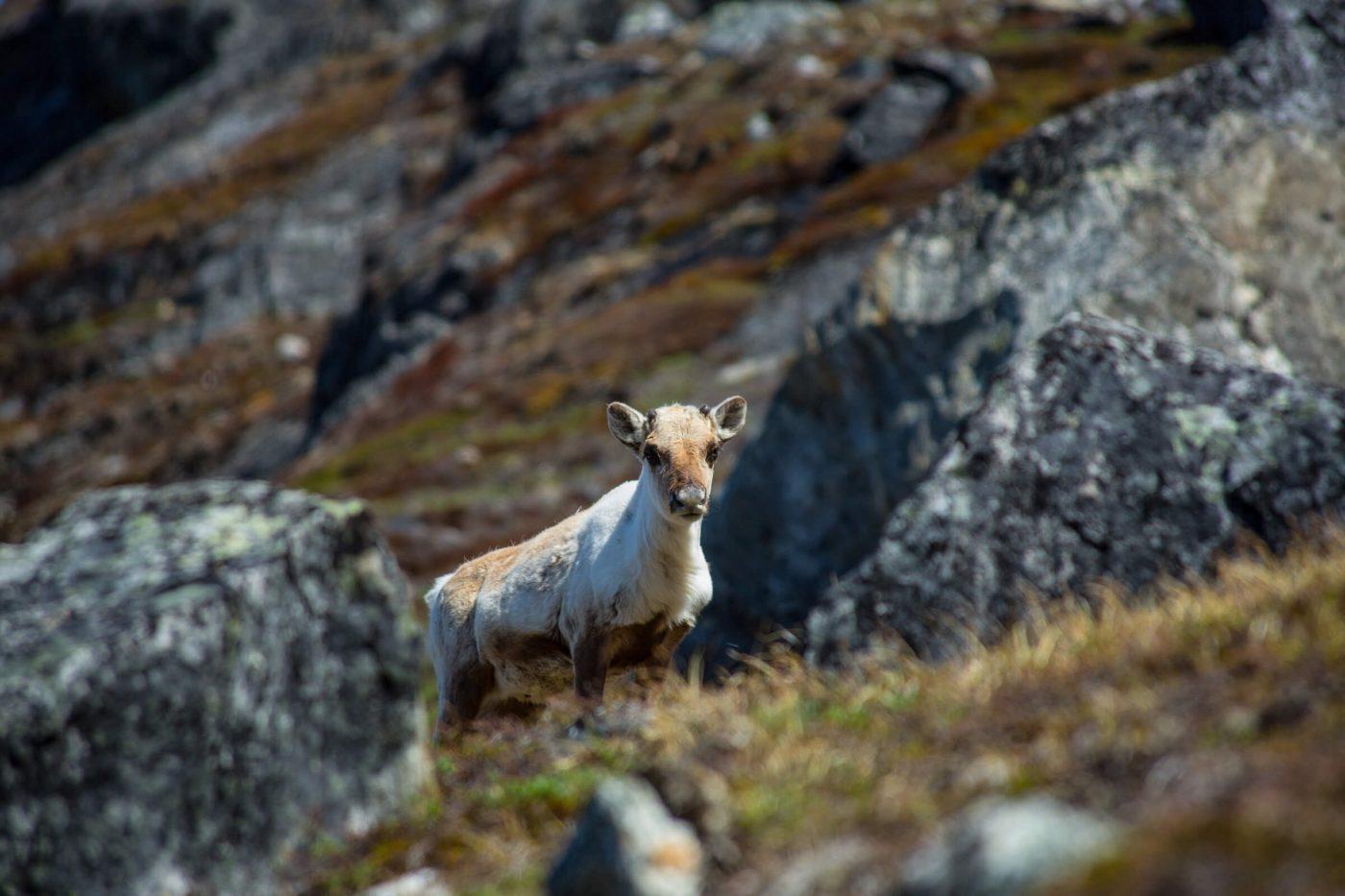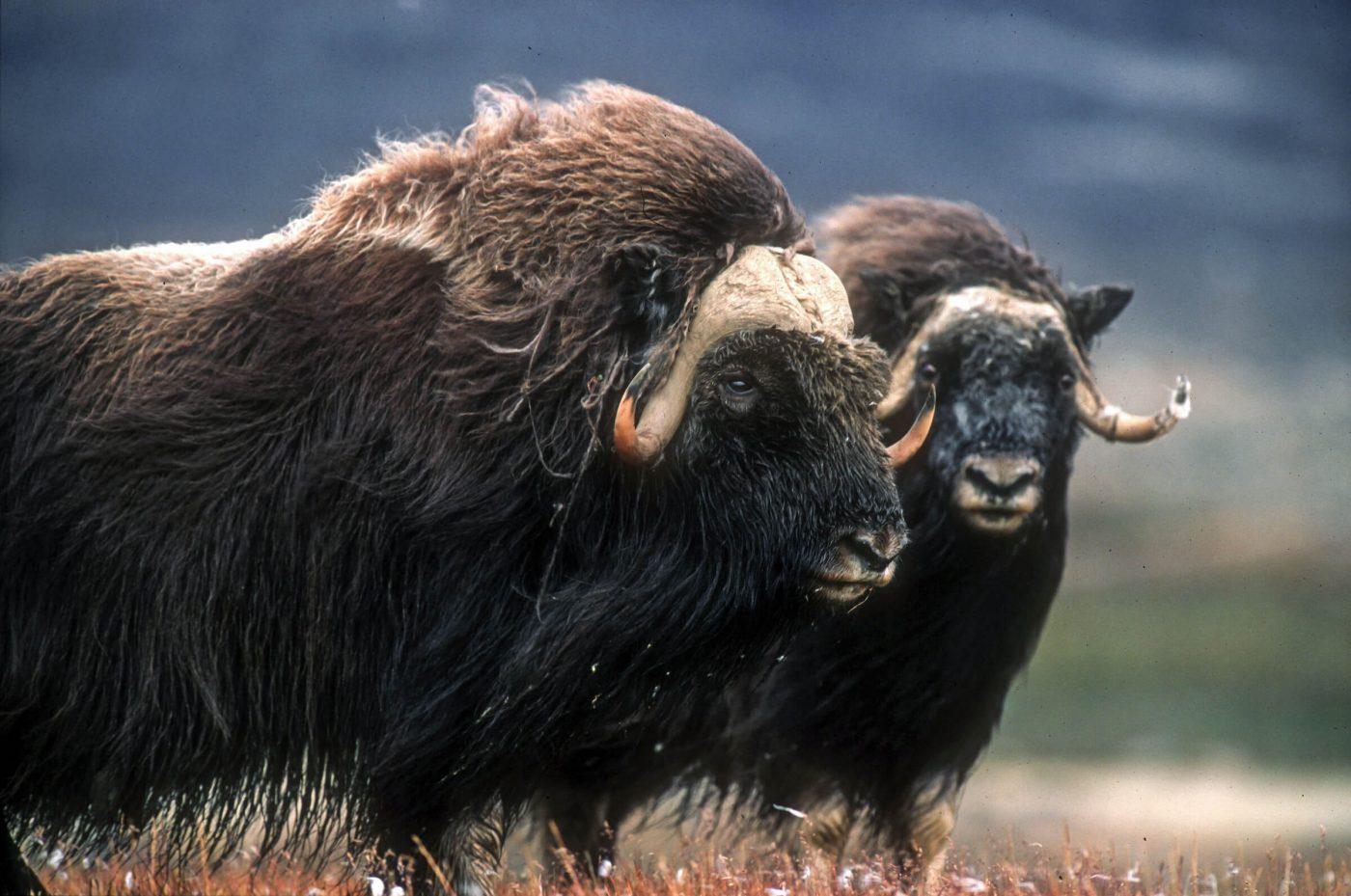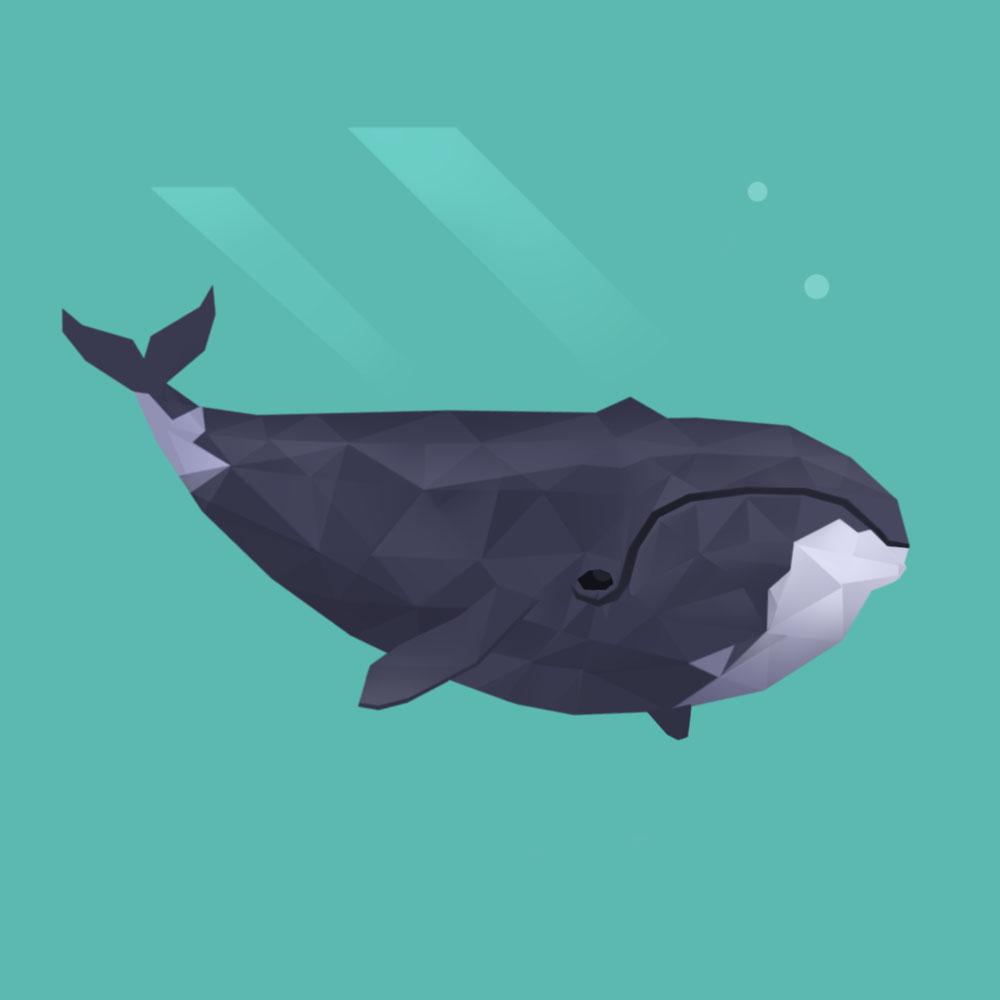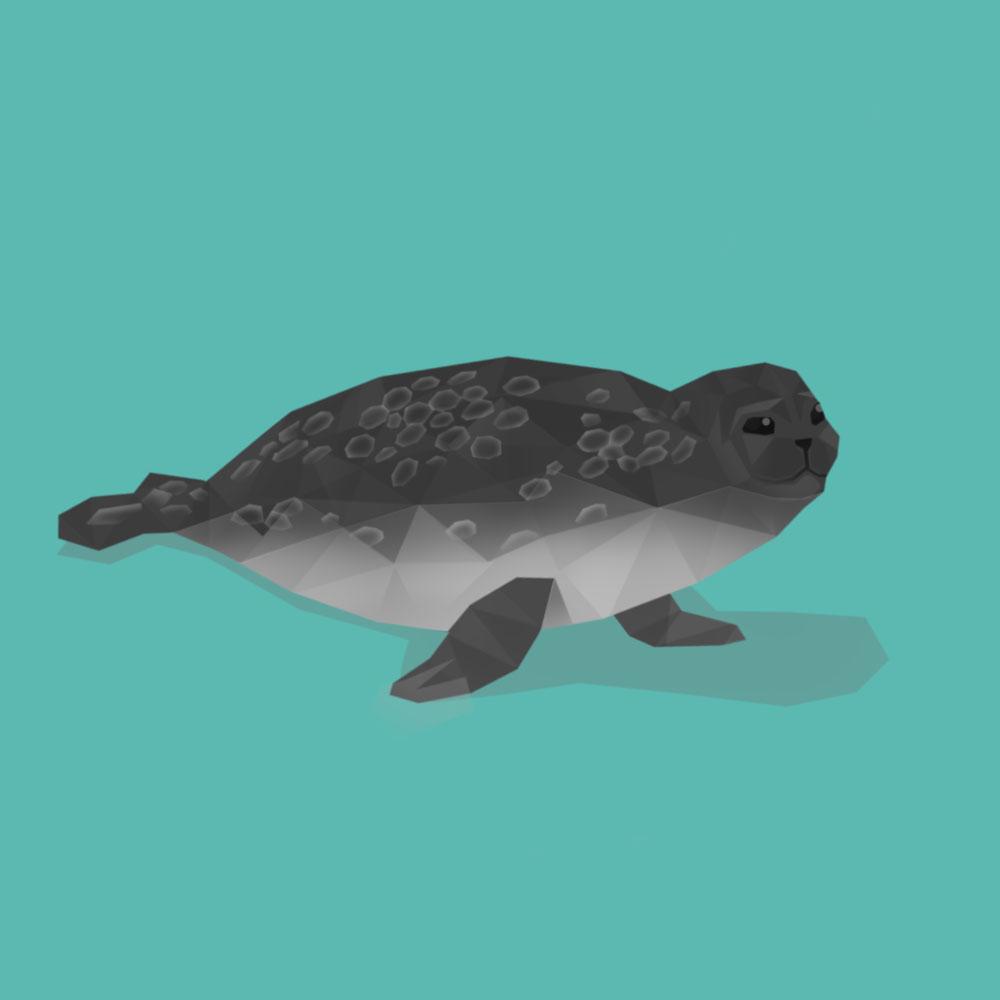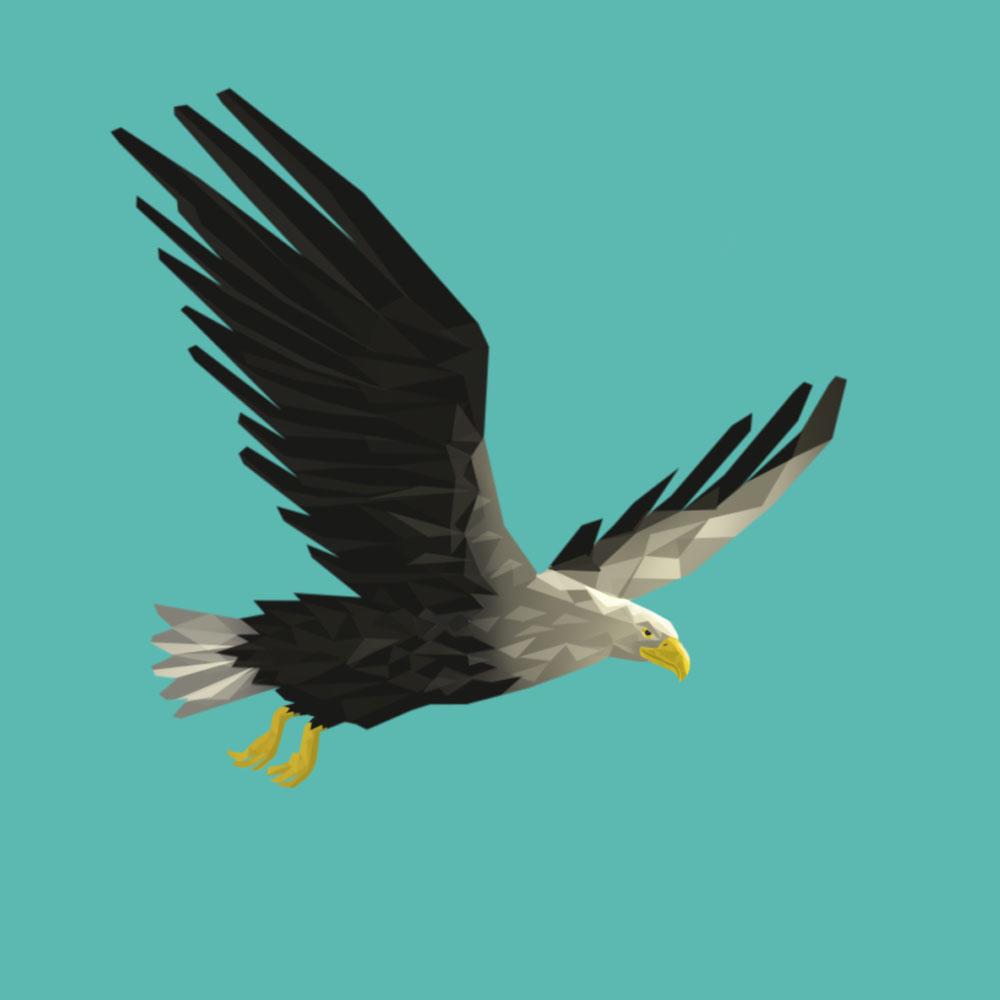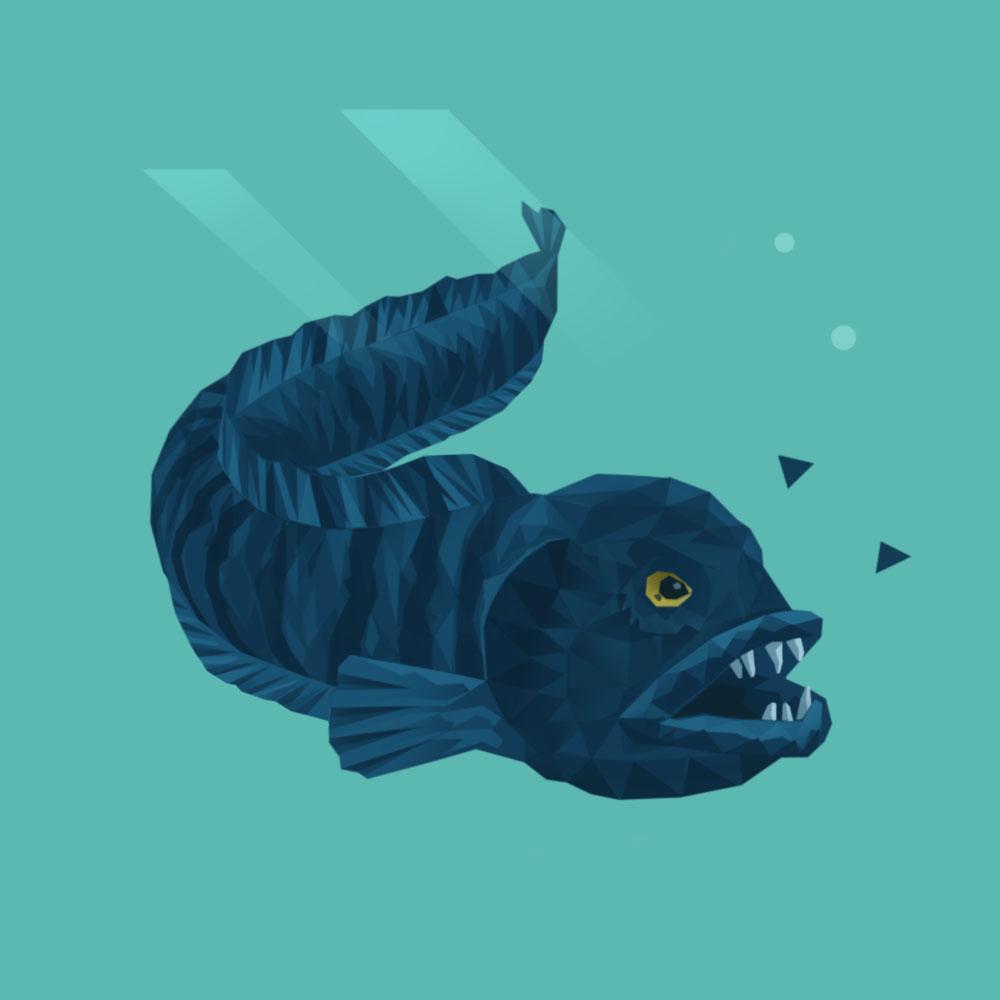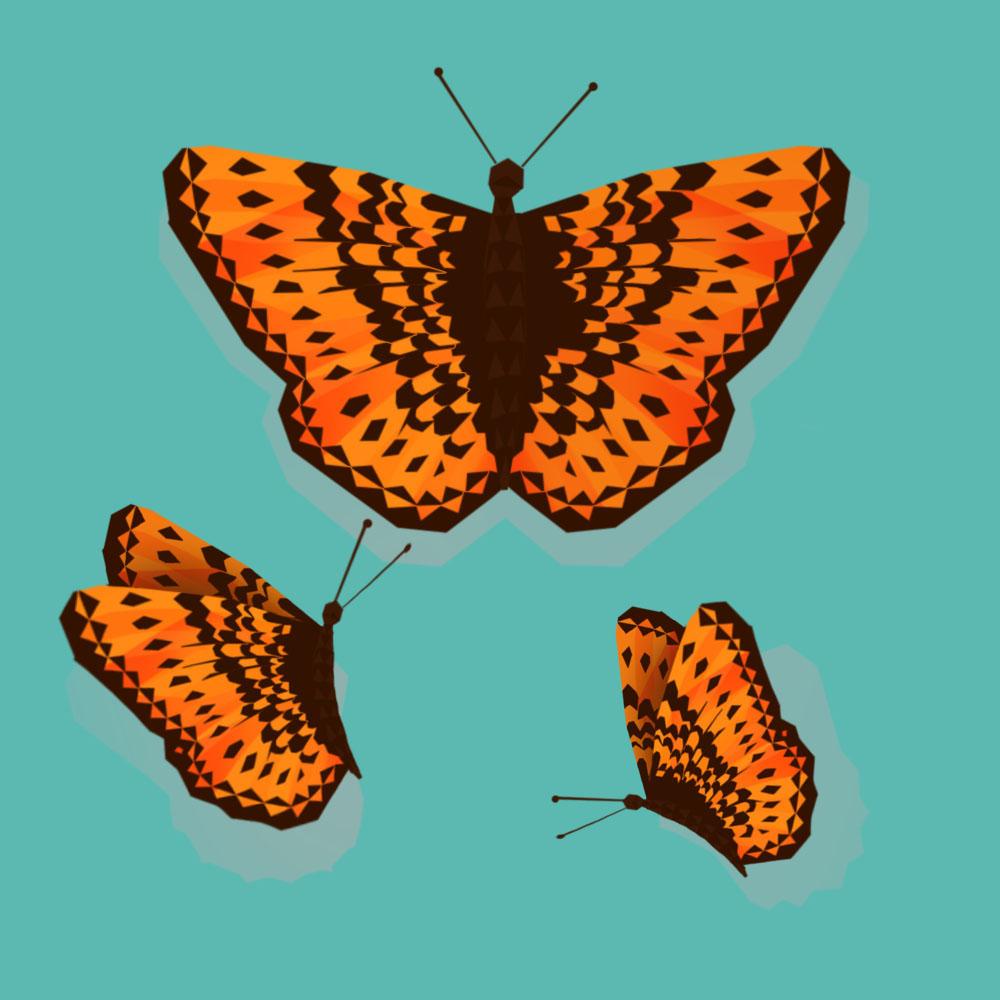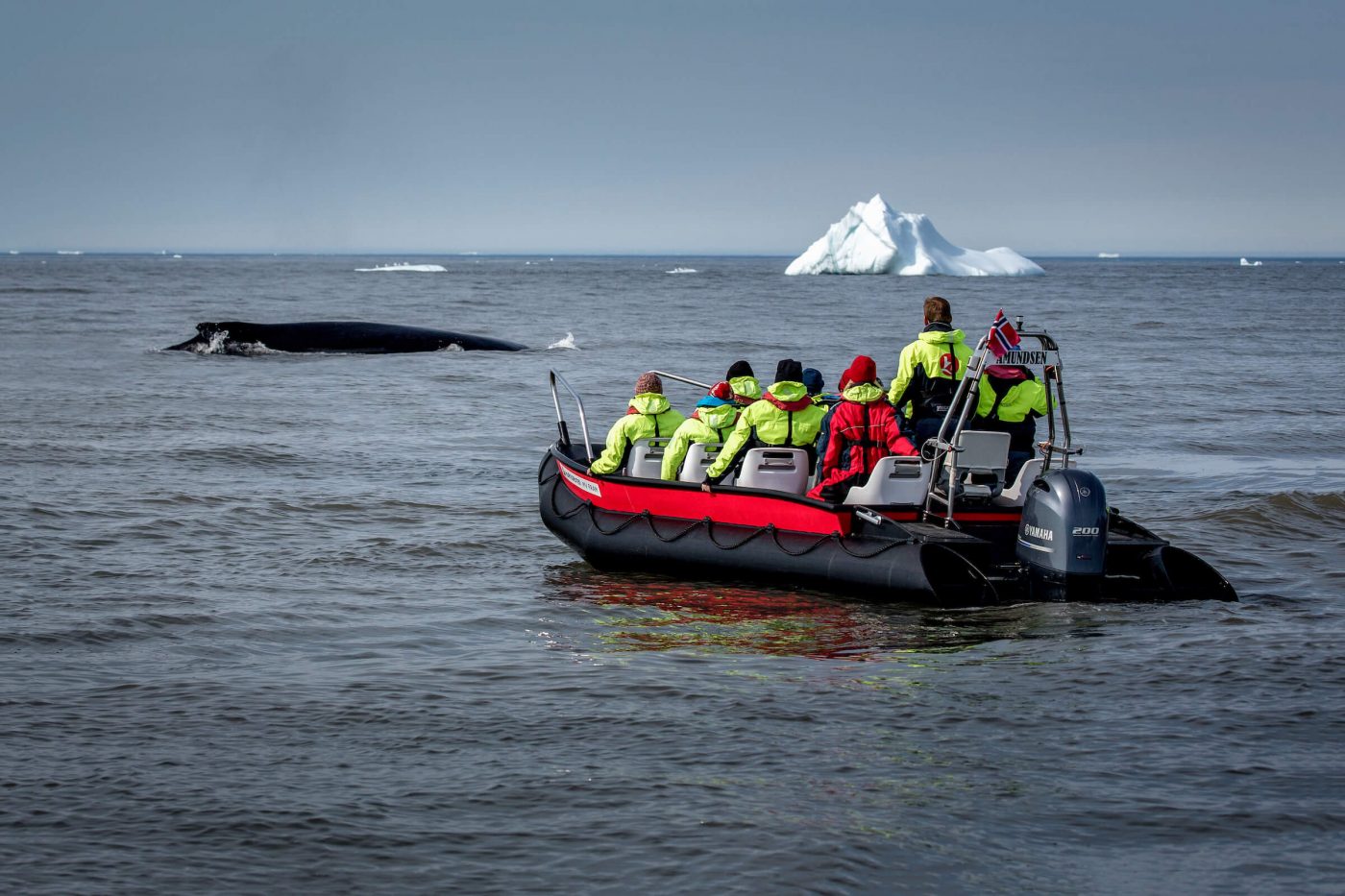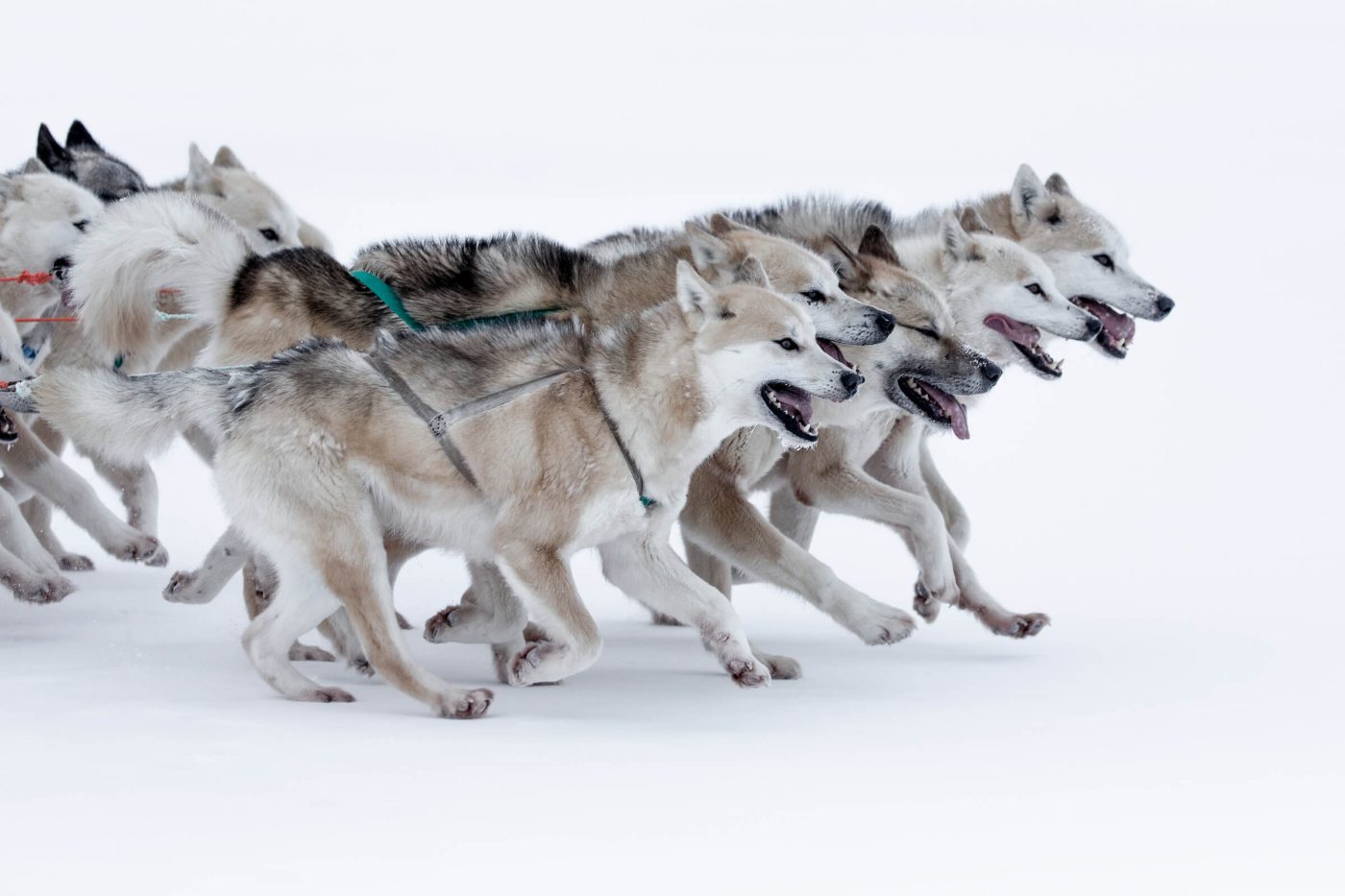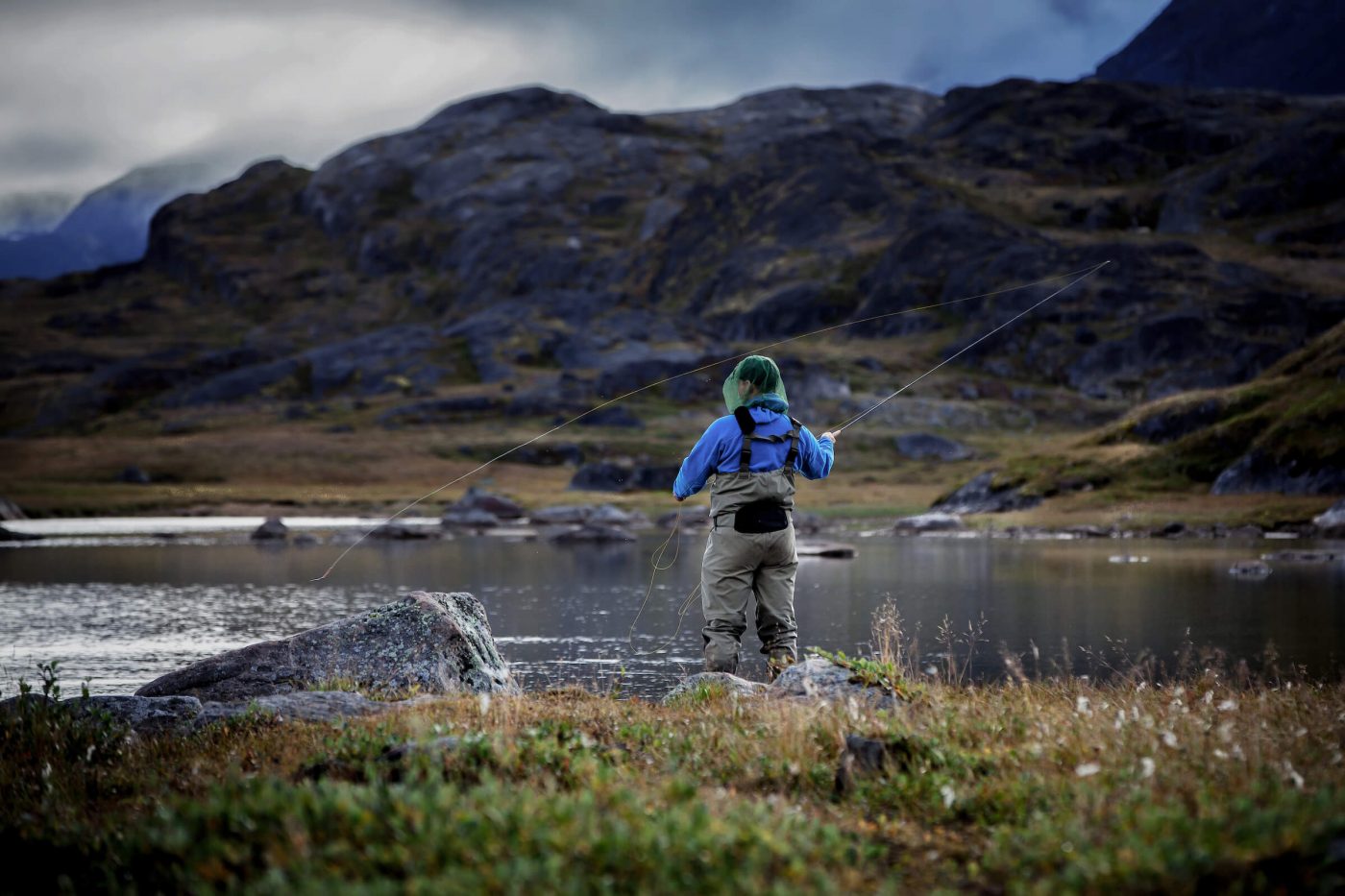There are nine land mammals in Greenland, which is not many for such an enormous country as Greenland, but it also requires extraordinary characteristics to survive the cold and harsh winters. Greenlandic land mammals are characterised by having thick furs and unique abilities to find food.
In addition to the land mammals mentioned above, there are also Arctic wolves, stoats, Arctic lemmings and the rare wolverine in Greenland, but these species predominantly live in the northernmost and north-eastern Greenland, where no humans live. In many of Greenland’s urban areas, you can also encounter mice and rats. However, they are not native, but brought in, for example, via ships.
Polar Bear
Nanoq (GL)
Ursus maritimus (LAT)
The polar bear is one of Greenland’s most iconic animals and the world’s largest land predator. The male can grow up to 3 metres long and weigh over 800 kg, but typically weighs 5-600 kg. The female is somewhat smaller, up to 400 kg. The fur is white, greyish-white or white-yellow, and their nose and lips are black just like their skin underneath the dense, insulating fur.
The polar bear travels where there is sea ice, and only comes ashore when the ice becomes too thin or when the female has to give birth. They are most frequently found in North and Northeast Greenland but travel along the entire east coast, and they can travel all the way to South Greenland with the drifting ice (especially around Nanortalik). They are extremely rare on the west coast from Upernavik and down to Paamiut.
The ringed seal is the polar bear’s favourite prey, but it also kills other seal species and even beluga and narwhal. Fish, seabirds, bird eggs, whale carrion and plants are also on the menu. It can take a long time for it to catch prey, so when it does, it will gorge and eat up to 70 kg.
The polar bears mate in the spring, and the pregnant females go ashore in October-November to dig a cave in deep snow. Around New Year, one-two cubs are born, and they stay in the cave until April, after which they follow the mother out on the ice. Usually, the cubs and mothers remain together for over two years, which is why the female only has cubs every three years.
Across the Arctic, there are an estimated 20-25,000 polar bears, a large proportion of whom live in or visit Greenland. The polar bear is threatened by the disappearance of the sea ice caused by global climate change, which may mean that they come ashore more often and are therefore in close contact with people.
For the traveller, it is quite unlikely to meet a polar bear in Greenland, because they prefer the cold and deserted north and east. The best chance to spot a polar bear is by cruise ship to East Greenland or in the area around Qaanaaq. If there is a risk of polar bears, then make sure you are well prepared and take a look at our infographic about encountering polar bears.
Arctic Fox
Terianniaq (GL)
Vulpes lagopus (LAT)
The Arctic fox is found throughout Greenland. It can grow up to 1 metre long, including a 30 cm bushy tail. There are two types of Arctic fox – the blue fox and white fox, which are genetically very similar, but in addition to fur colour, they also differ in lifestyle.
The blue fox’s fur is dark brown to grey-black all year round, while the white fox’s fur changes from entirely white in winter to brown in summer (with a whitish chest and belly). The winter coat is three times thicker than the summer coat and is considered to be the warmest coat in the world.
The blue fox is a coastal animal where it feeds from the sea: fish, seal cubs, crustaceans, clams, mussels, seabirds, bird eggs, insects and seaweed. The white fox, on the other hand, stays inland, where it mainly feeds on Arctic lemmings, and where there are none of these, on Arctic hares and some of the same things as blue foxes.
In the spring, the foxes form pairs that can last a lifetime. They live in caves underground that can be over 300-years-old and widely branched. The female gives birth to 5-10 cubs and up to 19, and so has some of the largest litters among predators.
As the Arctic fox is hunted, it is usually very shy of humans. However, you can usually see it on a hike in the mountains if you do not make too much noise. In winter, you can also see them running on the sea ice. Where it is not hunted, for example, in the National Park, they can become very confident and get close to people.

